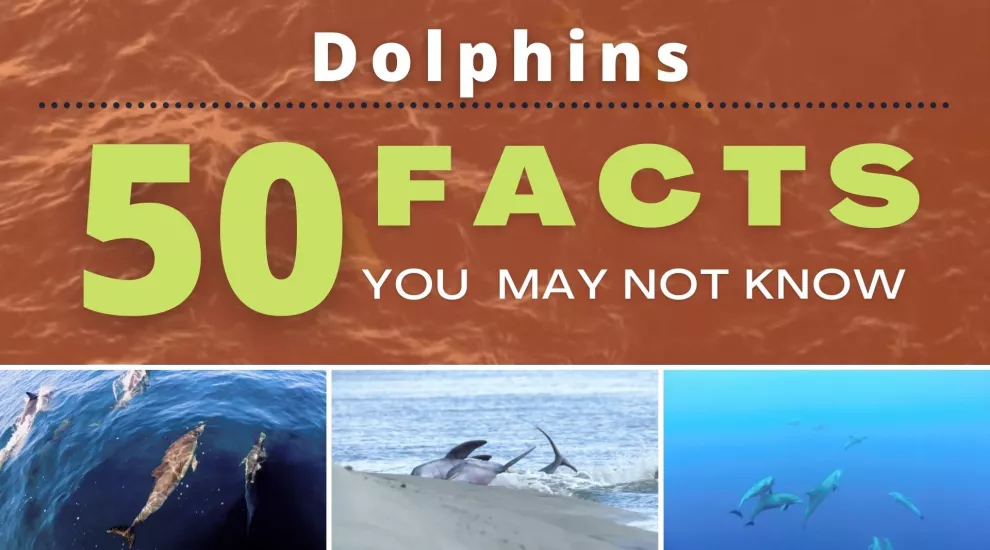
Off the South Carolina coast, many Dolphins have claimed this area for several centuries and are considered to be one of the most precious animals that the Palmetto State has to offer.
South Carolina’s coastal zone is a barrier of land that connects mainland South Carolina to the Atlantic Ocean. With 7,509 square miles, this area of land is best known for its sandy beaches, diverse ecosystems, range of popular attractions, and popular tourist cities such as Charleston and Hilton Head Island.
Dolphins are creatures that come from the whale family and are best known for their curved fins, interactive nature, and high intelligence skills.
If you are familiar with Dolphins or not in addition to their impact on South Carolina, here are 50 fun facts about them!
The most popular place to find Dolphins in South Carolina is on Kiawah Island, located 25 miles outside of Charleston.
Bottlenose dolphins are the most common dolphin type to be found in Palmetto State.
The name “bottlenose” comes from their short beaks.
Dolphins do not make any noise from their mouths in any capacity.
Instead, dolphins make sounds from their blowhole.
Bottlenose dolphins can have around 80-100 teeth in their mouth.
Dolphins can hold their breath for up to five to seven minutes when necessary.
Bottlenose dolphins can be found in costal places such as bays and beaches.
These creatures can live up to 60 years during their lifespan.
Bottlenose dolphins can grow up to 13 feet long.
Every 3 to 6 years, female dolphins will produce a calf.
In terms of its speed, Dolphins can swim around 12 miles per hour.
To communicate, dolphins must use and develop whistles to state their environment with others, thanks in part to their blowhole.
When sleeping, dolphins must shut down one of their brain hemispheres in order to function.
Like other animals, dolphins reproduce through internal fertilization.
Newborn dolphins can entirely swim on their own once they are born from their mothers.
Dolphins have two unique feeding tactics when it comes to finding prey.
The first tactic revolves around them working as a team to capture fish and forcing them back towards the shoreline.
The second tactic is a process called echolocation, a process that uses sound to find objects nearby, which then proceeds to create a tidal wave to find prey.
Dolphins can make up to 1,000 clicking noises per second.
When digesting food, dolphins have three chambers that help break down the digestion process.
Like humans, dolphins’ behaviors are passed down from mother to calf and it can take a few years to master.
Besides team bonding and echolocation, dolphins can use tools such as sponges to capture food on the sea floor.
Some of the food dolphins eat includes smaller fish and shrimp.
Dolphins are considered to be the second smartest animal on the planet.
Humans and dolphins share a lot of similar characteristics since they have similar brain to body ratios.
Some examples of the characteristics that humans and dolphins share include being sociable, having longer lifespans, and reaching adulthood later.
The brains of dolphins are extremely well developed that they can process emotion.
Some of these emotions include fear, grief, and joy.
Dolphins have a curious personality, which allows them to explore the environment around them frequently.
One of the main reasons for dolphins having smart intelligence is based off their social structures in their lives.
Adult dolphins are generally not seen as prey by other sea creatures.
Calf dolphins can be haunted by larger sharks for their own meal.
However, this act is considered to be rare.
There is a misunderstanding that dolphins are an endangered species, but that is not the case.
Instead, Dolphins are a federally protected species protected by the Marine Mammal Protection Act.
Just like humans, dolphins face several challenges throughout their environment daily.
Challenges that they face include disease, pollution, and habitat loss.
In South Carolina, efforts have been made over the past several decades to protect dolphins.
In Charleston, the Charleston Lowcountry Marine Mammal Network provides training on first aid response when it comes to rescuing injured dolphins.
The goal of the organization is to protect marine mammals through science, awareness, and conservation.
People can adopt $35 dollars to take care of a dolphin in need.
As a result, people can earn a certificate and a plush dolphin as a result for their kindness.
People can join the organization, donate money, or shop for products they have to offer.
The Network also gives the public information about certain issues dolphins face in their daily lifestyle.
For kids, a dolphin camp is set up each year to help them become inspiring conversationists and how to save the dolphins’ diverse environment.
There are other popular events the organization holds each year.
People can take part in a marine mammal art show to show off cool paintings of dolphins and other sea creatures.
Dolphin Count is another popular event where local experts will come in and talk about how important it is to protect dolphins.
Lastly, Drinks for Dolphins take a certain percentage of local breweries to help support the organization’s mission.
For more information about dolphins in South Carolina, be sure to visit our What’s Wild program on these creatures for a more digitalized look!
{"preview_thumbnail":"/sites/default/files/styles/video_embed_wysiwyg_preview/public/video_thumbnails/5nDOmlanRus.jpg.webp?itok=wHCWwoX_","video_url":"https://youtu.be/5nDOmlanRus","settings":{"responsive":true,"width":"854","height":"480","autoplay":false},"settings_summary":["Embedded Video (Responsive)."]}





